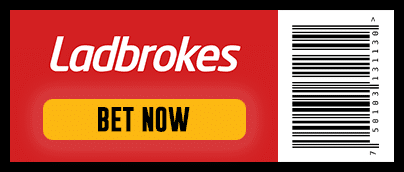On this page we talk about a few of the more technical and logistical aspects of events happening around the Melbourne Cup carnival, not necessarily Cup Day but the other days as well.
List Of Things You Need To Know
If you are a local Melburnian, then you can probably skip over this section because you’ll know it intimately.
But for those of you who live out of town and are wanting to get to the Flemington course you might be asking the question how do we do that?
Well it depends where you live, what direction you’re coming from and what mode of transport you’ll be using.
Let’s start with using your own vehicle.
As to be expected, parking will be an issue.
There are car park spots all along Fisher Parade but you’ll need to get in early.
You can even park in one of the outer suburbs that is within walking distance like Footscray or Ascot Vale.
However, the majority of the side streets are for resident parking only so you’ll get frowned upon if you try it on.
Bringing your vehicle is a bit of a pain especially if you want to enjoy the day out, so I would be inclined to leave it at home in the garage and use public transport instead.
Bus Services
There are many bus services traversing the western side of the CBD of Melbourne.
A good Central hub to catch a bus up to the racecourse is via Footscray. For instance, the 472 service which leaves Footscray every 20 minutes and travels up through Droop St, Farnsworth Ave and Fisher Parade will drop you right off outside the racecourse itself.
This bus goes through to Moonee Ponds and is very handy to know for WS Cox Plate day.
Train Service
You can either catch a dedicated service from Southern Cross to Flemington, or catch a train out to Footscray (most western destination trains stop at Footscray anyway), then walk across into the Footscray city centre right opposite the Markets, and catch the aforementioned 472 bus to Flemington.
We mention these two services, mainly because of ticketing issues.
If you catch the train directly out from Southern Cross, you’ll need to have your ticket to get into the racecourse on you.
When you get into Flemington railway station there is no ticketing booth, you’ll get access directly onto the racecourse and you’ll need to have your ticket on you to be scanned in.
If you come to the racecourse via the main gate from the Fisher Parade side, no problem you can buy a ticket from the ticketing booth which is located just behind the main gate entrance.
Once you have your ticket, you can then get in.
Tickets
The best way to get admission on to the racecourse is to purchase your tickets in advance via the Melbourne Cup web page and Ticketek.
Not only is this convenient but you may also get a discount.
No guarantees though. Your tickets can be physically sent to you in the post, or perhaps the easiest way is to have your tickets sent to you electronically so they sit on your phone, so that when you go through the main gate you just have your e-ticket on your phone being scanned to get onto the course.
A tip: make sure to turn up the brightness of your phone so the gate scanner can read your ticket bar code.
If it turns out you’re not that well-organised, you can still buy a physical ticket from the ticket booth located behind the main gate entrance on the Fisher Parade side of the racecourse entrance.
Prices will vary across the four days.
The two most expensive days are Derby Day and Cup Day, with Oaks Day and Stakes Day being lesser in price.
If you have a VRC membership, the prices will be cheaper still if you buy a Season Pass that takes in other race days at Flemington prior to the Cup Carnival, such as Turnbull Stakes Day and Makybe Diva Stakes Day.
You’ll also be able to use your season pass in the Autumn as well, for Lightning Stakes Day, Australian Guineas Day and Super Saturday (Newmarket Hcp and Australian Cup) etc.
The Track Configuration
The oval track at Flemington is a touch over 2300m.
The Melbourne Cup itself starts halfway up the 1200m shoot which is called the Straight Six (as in six furlongs).
Horses will run approximately 900m down the the home straight before doing a full lap to reach the winning post in approximately 3 minutes 25 seconds.
The Flemington course has very good drainage and very rarely does it get super wet.
This has improved remarkably in the last few years due in part to technology. The ideal rating for the course will be somewhere between a Good 4 and a Dead 5.
Not so hard that it will jar up some horses that don’t like hard tracks, and not so soft that it will inconvenience those that don’t like wet tracks.
Usually the track managers get it right on the major race day of the year.
Weather
The weather for Melbourne around the late October and early November period is a bit hit and miss at the best of times.
In last year’s 2018 Cup, the rain bucketed down for the first part of Cup Day, but eventually evened out by the time the Cup was run at around 3pm.
There have been some notable years when it was extremely wet.
1976 and 2010 being two examples.
If you are dressing for the occasion, then keep an eye out on the weather forecast at least two days beforehand.
Use the data from the Australian Bureau of Meteorology as your guide. (bom.gov.au)
Handicappers Guide
Usually a few months out from the Cup, the VRC Handicapper will assign a weight to all nominations at the first round.
This is a highly anticipated and highly contentious area for all connections.
Whether it’s the trainer, the owner, the journos, and more importantly the punters, the determination of the final makeup of the field and what eventual weight each horse will carry is of extreme importance.
It is both an art form and a science and not everyone appreciates the complexity of the final alloted weights to each horse as determined by the Handicapper Greg Carpenter.
Trying to marry up the form between European horses and local Australian horses can be a ticking time bomb.
There are age considerations, especially for the Northern Hemisphere 3 year olds.
There are weight for age considerations too, particularly where horses have raced one year and have gone up in age for the next year and their weight has markedly increased as well.
Penalties come into account if a horse wins a graduating race such as the Caulfield Cup.
Mares normally get given a lighter weight in comparison to the male horses.
In recent times, the maximum weight has tended to top out at around 58 kgs.
A far cry from some of the heavy weights that used to be carried back in the earlier years of the race, especially horses given 60 kgs plus.
There has been criticism that the weight scales between top and bottom have been compressed.
So for example, in the recent 2019 weight allocations, all 152 nominated horses have been assigned weights between 58 kgs and 49 kgs.
So that’s 9 kgs spread over 152 horses. I don’t think there is any way around that, it is what it is.
Despite all the conjecture, I believe the 2019 weight allocations are fair and sporting, and are based adequately on each horses form leading into the Melbourne Spring Carnival.
Good luck on the day and may you achieve financial success.
Return to: Melbourne Cup 2023




